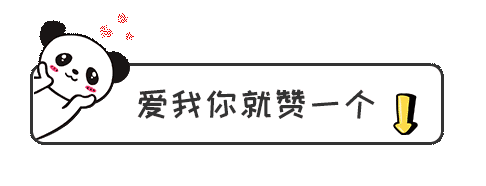1. Causes of Sighing
A. Lung Qi DeficiencyB. Insufficient Lung QiC. Spleen Qi DeficiencyD. Liver Qi StagnationE. Kidney Failing to Receive Qi 2. Causes to Consider for Nocturnal Crying in ChildrenA. Fear as a DiseaseB. Heat in the Heart ChannelC. Heat in the Spleen ChannelD. Cold in the Spleen Causing Abdominal Pain 3. Causes of Hoarseness or Loss of VoiceA. External Wind-Cold AttackB. External Wind-Heat AttackC. Lung and Kidney Yin DeficiencyD. Phlegm-Damp Obstruction 4. Self-Talking, Murmuring, Stopping When Seeing People, and Discontinuity in Speech are Often Due toA. Qi Stagnation Transforming into Phlegm, Phlegm-Fire Disturbing the HeartB. Severe Injury to Heart Qi, Mental DisarrayC. Insufficient Heart Qi, Spirit Lacking NourishmentD. Phlegm and Qi Stagnation Obstructing the SpiritE. Stagnation of Heat and Blood, Disturbing the Spirit

Answers and Explanations 1. 【Correct Answer】 D Explanation: Sighing, also known as a sigh, refers to a long or short sigh emitted when there is chest tightness and discomfort, often caused by emotional distress and liver qi stagnation (D is correct). Lung Qi Deficiency often presents with a light, low cough (A is incorrect). Insufficient Lung Qi often presents with a light, low cough (B is incorrect). Spleen Qi Deficiency often presents with fatigue and lack of energy (C is incorrect). Prolonged illness leads to body weakness, deficiency of essence and qi, causing the lungs to fail in their function of qi regulation, and the kidneys to fail in receiving qi, leading to shortness of breath (E is incorrect). 2. 【Correct Answer】 ABCD Explanation: Nocturnal crying in children is often due to fear as a disease (A is correct), or heat in the heart (B is correct) or spleen (C is correct) channels, or due to overconsumption of cold foods leading to cold in the spleen causing abdominal pain (D is correct). 3. 【Correct Answer】 ABCD Explanation: New cases of hoarseness or loss of voice are often due to excess conditions, commonly caused by external wind-cold (A is correct), or wind-heat attacking the lungs (B is correct), or phlegm-damp obstructing the lungs (D is correct), leading to lung qi not being able to disperse and clear, which is referred to as ‘the metal not sounding’. Prolonged hoarseness or loss of voice often indicates deficiency conditions, commonly due to various reasons leading to yin deficiency and excessive fire, or lung qi deficiency leading to weak voice, referred to as ‘the metal breaking and not sounding’ (C is correct). 4. 【Correct Answer】 C Explanation: Self-talking, murmuring, stopping when seeing people, and discontinuity in speech, known as ‘soliloquy’, belong to yin conditions, often due to insufficient heart qi and spirit lacking nourishment (C is correct), or can be caused by qi stagnation and phlegm obstruction, clouding the spirit (D is incorrect). Qi stagnation transforming into phlegm and phlegm-fire disturbing the heart often leads to ‘mad talk’ (A is incorrect). Severe injury to heart qi and mental disarray often leads to unclear consciousness and repetitive speech, intermittently and weakly, known as ‘zheng voice’ (B is incorrect). Stagnation of heat and blood disturbing the spirit often leads to unclear consciousness and incoherent speech, with loud and forceful voice, known as ‘delirium’ (E is incorrect).

●Unit Four: Auscultation and Olfaction● Auscultation and olfaction are methods of diagnosing diseases through listening to sounds and smelling odors. Listening to sounds includes examining the patient’s voice, breathing, speech, cough, heart sounds, vomiting, belching, sighing, sneezing, yawning, and bowel sounds. Smelling includes detecting abnormal odors emitted by the body, excretions, and the smell of the sickroom. Section One: Listening to Sounds
1Key Point One: Clinical Manifestations and Significance of Hoarseness and Loss of Voice
Hoarseness refers to a raspy voice, while loss of voice refers to a silent speech, also known as ‘dumb’. The former indicates a lighter condition, while the latter indicates a more severe condition.
1. New cases of hoarseness or loss of voice are often due to excess conditions, commonly caused by external wind-cold or wind-heat attacking the lungs, or phlegm-damp obstructing the lungs, leading to lung qi not being able to disperse and clear, referred to as ‘the metal not sounding’.
2. Prolonged hoarseness or loss of voice often indicates deficiency conditions, commonly due to various reasons leading to yin deficiency and excessive fire, or lung and kidney essence injury, referred to as ‘the metal breaking and not sounding’. 3. Sudden shouting or continuous loud speaking causing hoarseness or loss of voice also belongs to Qi and Yin Injury 4. Prolonged severe illness suddenly presenting with hoarseness often indicates a Critical Condition of Organ Qi Exhaustion. 5. Women in late pregnancy presenting with hoarseness or loss of voice is termed Pregnancy Loss of Voice (Zi Yin), caused by the growing fetus compressing the kidney’s collaterals, preventing kidney essence from nourishing the tongue and throat.
2Key Point Two: Clinical Manifestations and Significance of Delirium, Zheng Voice, Soliloquy, Erroneous Speech, Mad Talk, and Stammering
1. Delirium
Delirium refers to unclear consciousness, incoherent speech, and loud, forceful symptoms. It often belongs to excess conditions, caused by internal disturbance of evil heat, hence the ‘Shang Han Lun’ states ‘excess leads to delirium’. It is seen in externally contracted febrile diseases, warm evil entering the heart or yangming excess heat syndrome, or phlegm-heat disturbing the spirit.
2. Zheng Voice
Zheng voice refers to unclear consciousness, repetitive speech, intermittently and weakly, often due to prolonged illness leading to organ qi exhaustion and mental disarray, belonging to deficiency conditions, hence the ‘Shang Han Lun’ states ‘deficiency leads to Zheng voice’. It is seen in late stages of various diseases, critical phases.
3. Soliloquy
Soliloquy refers to self-talking, murmuring, stopping when seeing people, and discontinuity in speech. It is often due to weak heart qi, insufficient spirit, or qi stagnation and phlegm obstruction, belonging to yin conditions. Commonly seen in epilepsy and depression.
4. Erroneous Speech
Erroneous speech refers to patients who are clear in consciousness but occasionally speak incorrectly, realizing their mistakes afterward. This condition has both deficiency and excess types; deficiency often due to weak heart qi and insufficient spirit, commonly seen in prolonged illness or elderly patients with weakened organ qi; excess often due to phlegm-damp, blood stasis, or qi stagnation obstructing the heart orifices.
5. Mad Talk
Mad talk refers to mental disorder, incoherent speech, and shouting or cursing symptoms. The ‘Suwen: Pulse Essentials’ states: ‘Clothing not gathered, speech good or evil, not avoiding kinship, this is disorder of the spirit.’ It is often due to emotional distress, qi stagnation transforming into fire, phlegm-fire mutual obstruction, disturbing the spirit, often belonging to yang conditions and excess conditions, commonly seen in mania and blood stasis syndrome.
6. Stammering
Stammering refers to clear consciousness, normal thinking but difficulty in articulation, or unclear pronunciation. If habitual, it does not belong to pathological conditions. In illness, stammering often occurs with a strong tongue, often due to wind-phlegm obstructing the collaterals, indicating a precursor or sequela of stroke.
3Key Point Three: Clinical Manifestations and Significance of Coughing, Wheezing, and Asthma
(1) Coughing
Coughing refers to a sound produced when lung qi impacts the throat, creating a ‘cough, cough’ sound. Ancient practitioners classified it into three types: sound without phlegm is called cough, phlegm without sound is called ‘sou’, and phlegm with sound is called cough. It is often caused by external evils attacking the lungs, harmful gas stimulation, phlegm and fluids stagnating in the lungs, or qi and yin deficiency, leading to lung failure in clearing and descending, causing lung qi to rise. Clinically, it is essential to differentiate the sound of cough and the color, quantity, and quality of phlegm, and then consider the duration, medical history, and accompanying symptoms to distinguish the nature of the disease as cold, heat, deficiency, or excess.
1. A heavy, turbid, and muffled cough sound often belongs to excess conditions, caused by cold phlegm and dampness stagnating in the lungs, leading to lung failure in clearing and descending.
2. A light, clear, and low cough sound often belongs to deficiency conditions, commonly due to prolonged illness leading to lung qi deficiency and failure in clearing and descending.
3. A cough sound that is not loud, with thick yellow phlegm that is difficult to expectorate, often belongs to heat conditions, commonly due to heat evil attacking the lungs, leading to lung fluids being scorched.
4. A cough with phlegm sound, with abundant and easily expectorated phlegm, often belongs to phlegm-damp obstructing the lungs.
5. A dry cough with little or no phlegm often belongs to dry evil attacking the lungs or lung yin deficiency leading to dryness.
6. A short, paroxysmal, spasmodic cough, continuous and followed by a crowing sound, often referred to as whooping cough (Bai Ri Ke), commonly due to wind evil and phlegm-heat clashing, often seen in children.
7. A cough that sounds like a dog’s bark, accompanied by hoarseness and difficulty inhaling, is often due to lung and kidney yin deficiency, with epidemic toxins attacking the throat, commonly seen in diphtheria.
(2) Wheezing
Wheezing refers to difficulty in breathing, urgency, with mouth open and shoulders raised, even flaring nostrils, making it hard to lie flat. It is often caused by lung and heart changes, as well as diphtheria and acute laryngitis, and the differentiation also relates to the spleen and kidneys. Wheezing can be classified into deficiency and excess.
1. Excess Wheezing
Sudden onset, deep and long breathing, coarse and loud sound, with quick exhalation, is excess wheezing. It is often due to wind-cold attacking the lungs or phlegm-heat obstructing the lungs, leading to lung failure in dispersing and clearing, or water qi invading the heart.
2. Deficiency Wheezing
Slow progression of the disease, shallow and rapid breathing, difficult to sustain, with weak and low sound, only relieved by deep inhalation, and worsened by movement, is deficiency wheezing. It is due to lung and kidney deficiency, failure in regulating qi, or heart yang qi deficiency.
(3) Asthma
Asthma refers to rapid breathing resembling wheezing, with a wheezing sound in the throat. It is often triggered by internal consumption of fluids, external evils, prolonged residence in cold and damp places, or overconsumption of sour, salty, and cold foods. Wheezing does not accompany asthma, but asthma must accompany wheezing. Wheezing is characterized by urgent breathing and difficulty, while asthma is characterized by a wheezing sound in the throat. Clinically, wheezing and asthma often appear simultaneously, hence commonly referred to as wheezing asthma.
4Key Point Four: Clinical Manifestations and Significance of Vomiting, Hiccups, and Belching
(1) Vomiting
Vomiting refers to the expulsion of food, phlegm, and saliva from the stomach through the mouth. It is a manifestation of the stomach failing to harmonize and descend, with stomach qi rising. Ancient practitioners classified it into three types: with sound and substance is vomiting, with substance but no sound is expulsion, with sound but no substance is dry vomiting. However, clinically, it is difficult to distinguish, generally referred to as vomiting. Based on the strength of the vomiting sound and the urgency of the expulsion, one can judge the nature of the condition as cold, heat, deficiency, or excess.
1. Gentle vomiting with weak sound and clear, thin expulsion often belongs to deficiency-cold conditions, commonly due to spleen and stomach yang deficiency, leading to spleen failing to transport and stomach failing to harmonize and descend, causing stomach qi to rise.
2. Forceful vomiting with loud sound, expelling thick yellow fluid, or sour or bitter substances, often belongs to excess-heat conditions, commonly due to heat injuring stomach fluids, leading to stomach failing to nourish.
3. Vomiting that is projectile often indicates heat disturbing the spirit, or due to head trauma, with internal blood stasis or tumors causing increased intracranial pressure.
4. Vomiting with a sour and rotten taste often results from overeating or overconsumption of rich foods, leading to food stagnation in the stomach, stomach failing to harmonize and descend, causing stomach qi to rise.
5. When all dining companions experience vomiting and diarrhea, it is often due to food poisoning. Vomiting in the morning after eating at night, or vomiting in the evening after eating in the morning, indicates stomach reflux, often belonging to spleen and stomach yang deficiency.
6. Dry mouth and desire to drink, but vomiting after drinking is termed water reversal, due to fluid evil stagnating in the stomach, causing stomach qi to rise.
(2) Hiccups
Hiccups refer to an involuntary sound produced from the throat, short and frequent, often referred to as ‘hick’. It is a manifestation of stomach qi rising.
1. Frequent hiccups with a high-pitched sound, strong and forceful, often belong to excess conditions. Low-pitched, weak hiccups often belong to deficiency conditions.
2. New cases of hiccups with a strong sound often belong to cold or heat evils affecting the stomach; prolonged or severe cases of hiccups that do not stop, with low sound and weak energy, indicate stomach qi exhaustion.
3. Sudden onset of hiccups, with sound neither high nor low, without other medical history or accompanying symptoms, often belongs to dietary stimulation or sudden wind-cold affecting the stomach, usually short-lived and self-resolving.
(3) Belching
Belching refers to a long and slow sound emitted from the throat due to gas rising from the stomach. It was historically referred to as ‘yi’. It is a manifestation of stomach qi rising. After a full meal or drinking carbonated beverages, occasional belching without other accompanying symptoms is due to the expulsion of gas from the stomach and does not belong to pathological conditions. Clinically, based on the sound and odor of belching, one can judge deficiency and excess, cold and heat. 1. Sour and rotten belching, accompanied by abdominal distension, often due to food stagnation in the intestines, belonging to excess conditions.
2. Frequent and loud belching, with relief of abdominal distension after belching, often due to liver qi invading the stomach, belonging to excess conditions.
3. Frequent belching, accompanied by cold abdominal pain that improves with warmth, often due to cold evil invading the stomach or stomach yang deficiency.
4. Low-pitched, intermittent belching without sour or rotten odor, accompanied by poor appetite and reduced food intake, indicates stomach qi deficiency, belonging to deficiency conditions, commonly seen in elderly or weak individuals.
5Key Point Five: Clinical Manifestations and Significance of Sighing
Sighing, also known as a sigh, refers to a long or short sigh emitted when there is emotional repression and chest tightness. Unconsciously emitting a sigh, feeling relaxed afterward, indicates emotional distress and liver qi stagnation. Section Two: Smelling Odors
1Key Point One: Clinical Significance of Abnormal Breath and Excretions
(1) Breath
Breath refers to abnormal odors emitted from the mouth. Normal individuals do not emit abnormal odors while breathing or speaking. If foul odors are emitted from the mouth, it is termed halitosis, often related to poor oral hygiene, dental caries, constipation, or indigestion.
1. Sour and foul breath, accompanied by loss of appetite and abdominal distension, often indicates food accumulation in the stomach and intestines.
2. Foul breath often indicates stomach heat.
3. Putrid breath, or accompanied by coughing up pus and blood, often indicates internal ulcers or abscesses.
4. Foul breath with decayed gums indicates gingivitis.
(2) Excretions
1. Foul-smelling stools often indicate intestinal heat accumulation.
2. Loose stools with a fishy smell often indicate spleen and stomach deficiency-cold.
3. Stools that smell like rotten eggs, or contain undigested food, with sour gas, often indicate food stagnation, representing food accumulation transforming into rot and descending.
4. Yellow, turbid urine with a foul smell often indicates bladder damp-heat.
5. Sweet-smelling urine resembling rotten apples often indicates diabetes.
6. Foul menstrual blood often indicates heat conditions.
7. Menstrual blood with a fishy smell often indicates cold conditions.
8. Vaginal discharge that is foul and yellow and thick often indicates damp-heat.
9. Vaginal discharge that is fishy and clear often indicates cold-damp.10. Foul-smelling discharge with mixed colors often indicates cancer.
2Key Point Two: Clinical Significance of Abnormal Odors in the Sickroom
The odors in the sickroom are formed by the body itself or excretions and secretions. The odor developing from the body to fill the sickroom indicates a severe condition. Clinically, smelling the odors in the sickroom can serve as a reference for inferring the condition and diagnosing specific diseases.
1. Foul odors in the sickroom often indicate epidemic diseases.
2. A bloody smell in the sickroom often indicates that the patient is losing blood.
3. A putrid smell in the sickroom often indicates that the patient has ulcers or abscesses.
4. A corpse-like smell in the sickroom often indicates organ failure and severe condition.
5. Ammonia-like smell in the sickroom often indicates kidney failure.
6. A rotten apple-like smell in the sickroom often indicates diabetes complications, belonging to critical conditions.
7. A garlic-like smell in the sickroom often indicates organophosphate poisoning.






